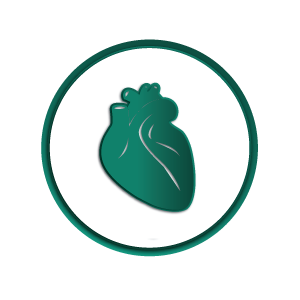Departments
CTVS
The field of Cardiovascular and Thoracic Surgery (CTVS) plays a pivotal role in managing a wide range of heart and chest diseases. This surgical subspecialty addresses conditions affecting the heart, lungs, esophagus, and other vital structures in the chest. In this comprehensive guide, we will delve into the different types of CTVS diseases, the diagnostic methods employed, and the technology transforming this field.
Understanding Cardiovascular and Thoracic Surgery
CTVS is a specialized branch of surgery that deals with the surgical treatment of conditions related to the heart and chest. These procedures can be life-saving and are employed to address a variety of medical issues, ranging from congenital heart defects to coronary artery disease and lung cancer.
1. Coronary Artery Disease (CAD)
CAD is a condition where the blood vessels supplying the heart muscle become narrow or blocked, leading to reduced blood flow. This can result in chest pain (angina) or heart attacks.
2. Congenital Heart Defects
These are structural heart abnormalities present at birth. CTVS surgery is often required to correct these defects, ensuring proper heart function.
3. Valvular Heart Disease
Conditions affecting heart valves can disrupt blood flow within the heart. Surgery is often necessary to repair or replace faulty valves.
4. Aortic Aneurysms and Dissections
Weakness in the aorta can lead to the development of aneurysms or dissections. Surgical intervention can prevent life-threatening complications.
5. Lung Cancer
CTVS surgeons play a crucial role in treating lung cancer, often by removing cancerous tumors or affected lung tissue.
6. Esophageal Disorders
CTVS also addresses disorders of the esophagus, such as gastroesophageal reflux disease (GERD) and esophageal cancer.
Accurate diagnosis is the foundation of effective treatment. CTVS diseases are diagnosed through a combination of medical history, physical examination, and various diagnostic tests, including:
1. Echocardiography
This ultrasound-based test creates detailed images of the heart, allowing doctors to assess its structure and function.
2. Angiography
By injecting a contrast dye into the blood vessels, angiography helps visualize blood flow and detect blockages or aneurysms.
3. CT and MRI Scans
Advanced imaging technologies like CT and MRI scans provide detailed cross-sectional images of the chest and heart, aiding in diagnosis.
4. Cardiac Catheterization
This procedure involves threading a catheter through blood vessels to measure pressures, take samples, or perform interventions.
Over the years, technological advancements have revolutionized CTVS, making surgeries safer and more precise. Some notable innovations include:
1. Minimally Invasive Surgery
Techniques like robot-assisted surgery and video-assisted thoracic surgery (VATS) have reduced the invasiveness of procedures, leading to quicker recovery times and fewer complications.
2. 3D Printing
Surgeons can now create detailed 3D-printed models of a patient's heart or chest, allowing for better preoperative planning.
3. Artificial Intelligence (AI)
AI is being used to analyze medical images, predict surgical outcomes, and assist surgeons during procedures.
4. Organ Transplants
Advancements in organ preservation techniques and immunosuppressive medications have improved the success rates of heart and lung transplants.



